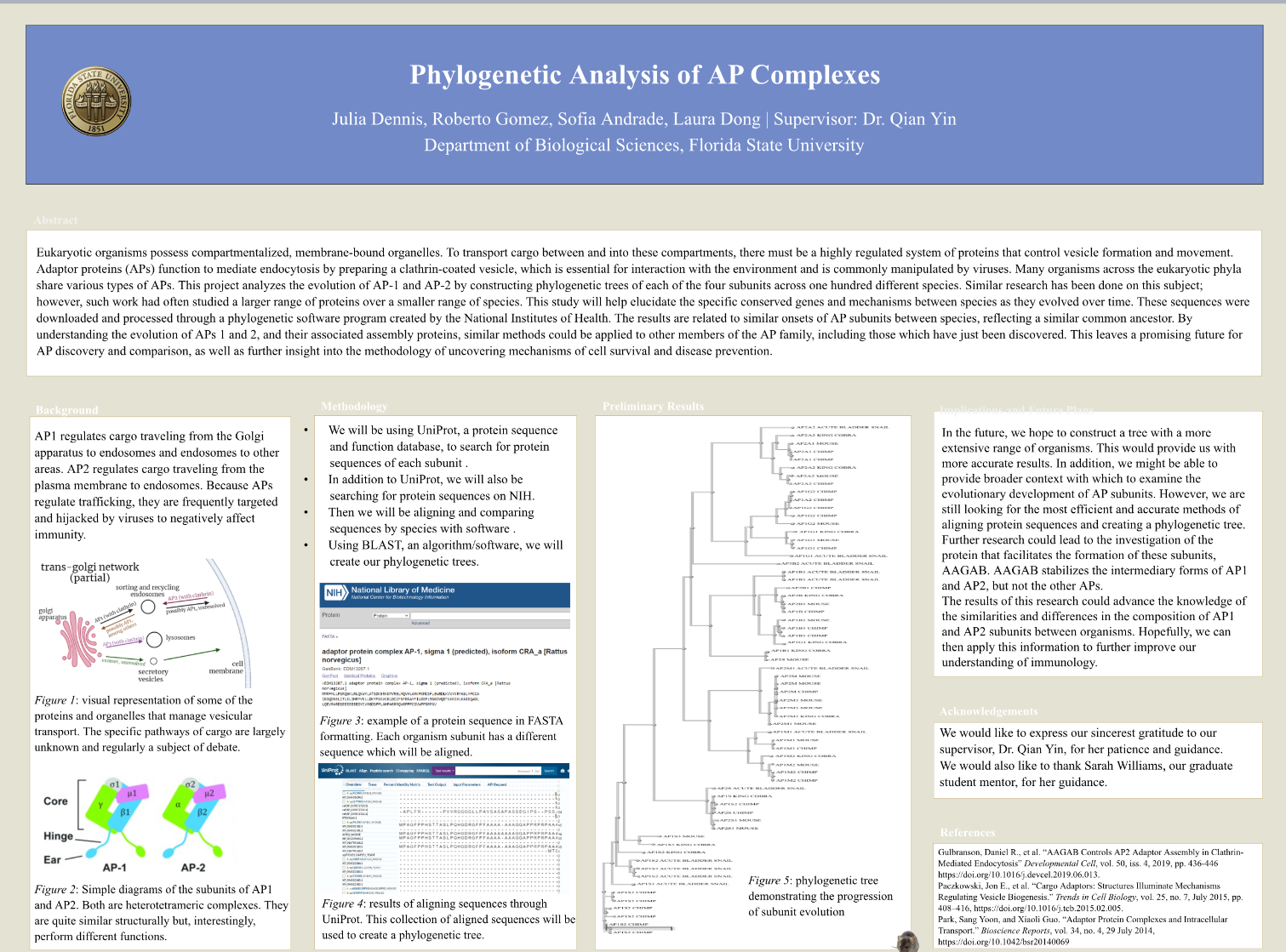Research Symposium
24th annual Undergraduate Research Symposium, April 3, 2024
Sofia Andrade She/her Poster Session 5: 4:00 pm - 5:00 pm/438

BIO
I am a first year biological science student on the premed track with a special interest in microbiology and immunology. I am part of the Latino community and I am from Miami, Florida. My career goals include completing medical school and an internal medicine residency to hopefully get the chance to improve quality of life and public health.
Phylogenetic Analysis of AP Complexes
Authors: Sofia Andrade, Qian YinStudent Major: Biological Science
Mentor: Qian Yin
Mentor's Department: Molecular Biophysics Mentor's College: College of Arts and Sciences Co-Presenters: Julia Denis, Roberto Gomez, Laura Dong
Abstract
Eukaryotic organisms possess compartmentalized, membrane-bound organelles. To transport cargo between and into these compartments, there must be a highly regulated system of proteins that control vesicle formation and movement. Adaptor proteins (APs) function to mediate endocytosis by preparing a clathrin-coated vesicle, which is essential for interaction with the environment and is commonly manipulated by viruses. Many organisms across the eukaryotic phyla share various types of APs. This project analyzes the evolution of AP-1 and AP-2 by constructing phylogenetic trees of each of the four subunits across one hundred different species. Similar research has been done on this subject; however, such work had often studied a larger range of proteins over a smaller range of species. This study will help elucidate the specific conserved genes and mechanisms between species as they evolved over time. These sequences were downloaded and processed through a phylogenetic software program created by the National Institutes of Health. The results are related to similar onsets of AP subunits between species, reflecting a similar common ancestor. By understanding the evolution of APs 1 and 2, and their associated assembly proteins, similar methods could be applied to other members of the AP family, including those which have just been discovered. This leaves a promising future for AP discovery and comparison, as well as further insight into the methodology of uncovering mechanisms of cell survival and disease prevention.
Keywords: AP Complexes Immunology


